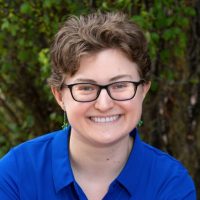
Alison Ochs
Postdoctoral Fellow
| Degrees: | B.Sc. (Mount Holyoke College), Ph.D. (Purdue University) |
| Phone: | 343-463-5134 |
| Email: | alisonochs@cunet.carleton.ca |
| Office: | 333 Nesbitt Building |
Current Research
I am currently working on a global estimate of vertebrate road mortality. With road networks expanding worldwide, understanding the magnitude of the effect these structures have on wildlife is growing in importance. A global estimate will allow us to show how the impacts of roads compare to other impacts on wildlife, such as hunting and other man-made structures. We will further attempt to identify the animal groups most at risk and landscapes and locations where road mortality is high. This project will also identify research gaps and areas where additional work is needed.
Additionally, I am also continuing my work with terrestrial salamanders with a project on salamander dispersal across roads. Red-backed salamanders are known to be highly sedentary, yet recent genetic research has found contiguous populations across large habitat gaps such as fields and roads. This suggests that at least some salamander individuals may be moving more than expected. My research seeks to examine what demographic of salamander undergoes dispersal into newly created habitat, and how the presence of roads affects that dispersal.
Selected Publications
Ochs, A.E., R.K. Swihart, and M.R. Saunders. 2024. Population-level effects of prescribed fires on terrestrial salamanders. Forest Ecology and Management 560:121842.
Ochs, A.E., M.R. Saunders, and R.K. Swihart. 2024. A Comprehensive Review of the Effects of Roads on Salamanders. Landscape Ecology 39:77.
Ochs, A.E., M.R. Saunders, and R.K. Swihart. 2022. Response of terrestrial salamanders to the decade following timber harvest in hardwood forests. Forest Ecology and Management 511:120159.
Siddig, A.A.H.; Ochs, A.; Ellison, A.M. 2019. Do Terrestrial Salamanders Indicate Ecosystem Changes in New England Forests?. Forests, 10: 154.
Ochs, A., and Siddig A. 2017. Response of red-backed salamanders (Plethodon cinereus) to changes in hemlock forest soil driven by invasive hemlock woolly adelgid (Adelges tsugae). Environments, 4(1): 8.